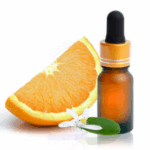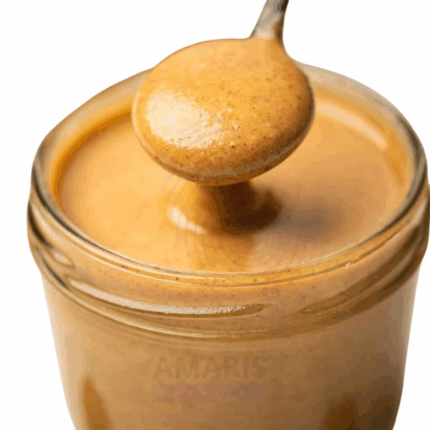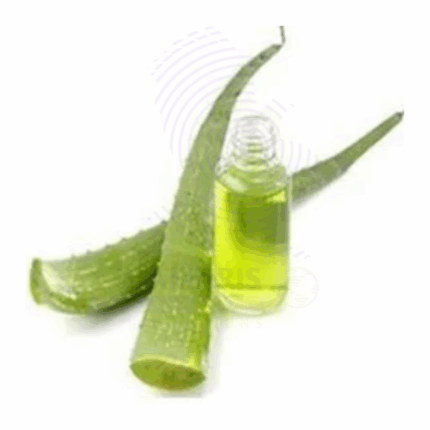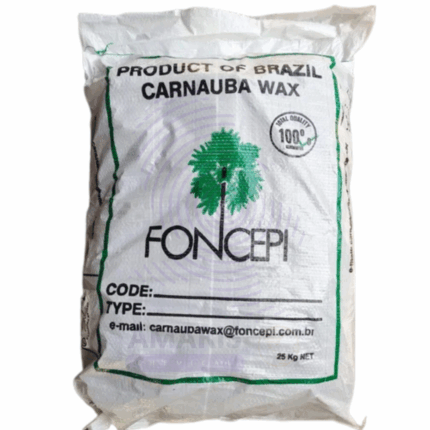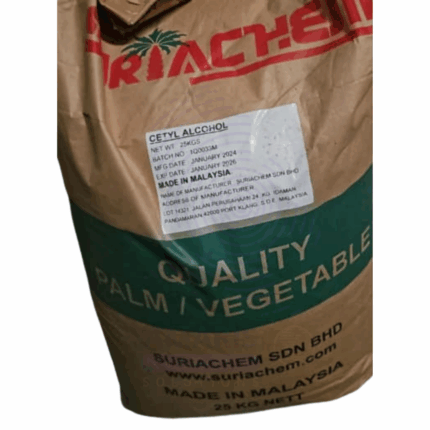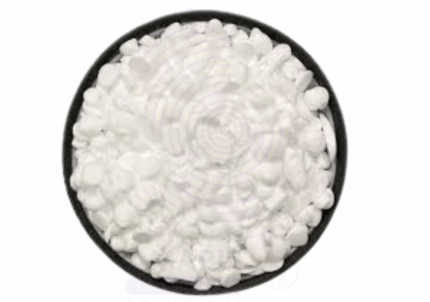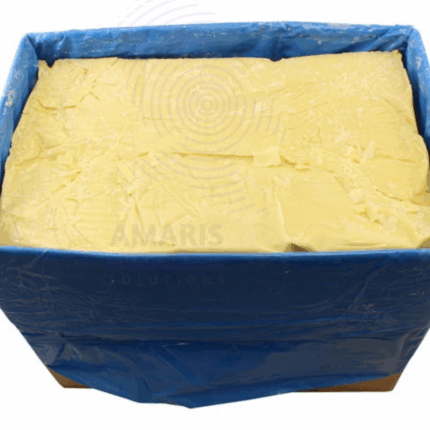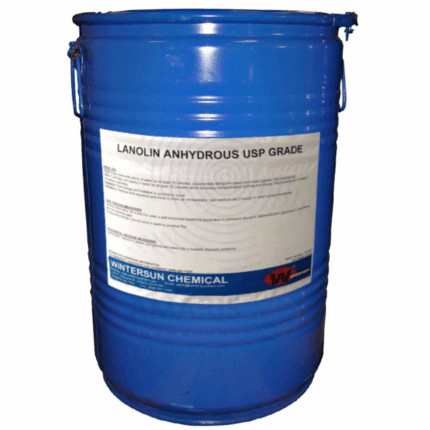Sweet Almond Oil
Whatsapp Order
Sweet Almond Oil is a nutrient-rich vegetable oil cold‑pressed or solvent‑extracted from the kernels of Prunus amygdalus var. dulcis, widely cultivated in Mediterranean and subtropical regions. It offers a light, non-greasy texture and a subtle nutty aroma. Rich in oleic and linoleic fatty acids, vitamin E (tocopherols), phytosterols, and antioxidants, it provides moisturizing, anti-inflammatory, softening, and skin barrier–strengthening properties. Sweet Almond Oil is popular in culinary applications, skincare, hair care, massage blends, and therapeutic formulations.
Description
Table of Contents
Toggle
Sweet Almond Oil
Primary Uses
- Aromatherapy & Wellness
- Used as a carrier oil in massage blends, rollers, and diffuser preparations for its skin compatibility.
- Included in wellness oils and body treatments for serious dry, irritated, or sensitive skin.
- Blended into facial oils and serums for gentle hydration and nourishment.
- Added to aromatherapy mixtures to safely dilute potent essential oils.
- Used in prenatal and baby massage oils due to low sensitization risk and gentle absorption.
- Cosmetics and Personal Care
- Incorporated in creams, lotions, emulsions, and body butters for deep moisturization.
- Used in lip balms, cuticle oils, and facial serums for conditioning and smoothing.
- Added to shampoos, conditioners, and scalp treatments for nourishment and shine.
- Employed in cleansing balms and oil cleansers for gentle makeup removal and skin softness.
- Used in beard care and men’s grooming products for conditioning and subtly nutty fragrance.
- Introduced in sunscreen and after-sun care products for hydration and calming effects.
- Blended into body oils and bath blends for holistic skin wellness.
- Topical Applications
- Used as a base in salves, ointments, and herbal infusions for healing minor cuts, abrasions, and dryness.
- Incorporated in scar-support and stretch mark products for improving elasticity and texture.
- Applied in soothing barrier creams for eczema, dermatitis, and chapped skin.
- Used in post-procedure skin recovery oils for hydration and gentle rejuvenation.
Secondary Uses
- Food and Beverage Chemicals
- Used in cooking, salad dressings, and dips for its mild flavor and healthy fat profile.
- Incorporated in natural flavor emulsions and gourmet dessert oils.
- Employed in dietary supplements and nutraceutical oils for essential fatty acid delivery.
- Applied in food-grade oil-based flavor carriers and oil-in-capsule products.
- Cosmetic and Personal Care Chemicals
- Incorporated as an emollient and antioxidant base in hypoallergenic and sensitive-skin formulations.
- Utilized in makeup, natural skincare lines, and fragrance-free personal care products.
- Pharmaceutical Chemicals
- Used as an excipient, lipid carrier, or softening agent in topical pharmaceutical formulations.
- Employed in oral soft gelatin capsules or liquid formulations requiring mild vegetable oil.
- Environmental and Green Chemicals
- Explored in biodegradable lubricant formulations and eco-friendly bioderived solvent blends.
- Used as a sustainable, plant-based oil alternative in green industry products.
KEY PRODUCT FEATURES
1. Basic Identification Attributes
- Botanical Name: Prunus amygdalus var. dulcis
- Common/Trade Name: Sweet Almond Oil
- INCI Name: Prunus Amygdalus Dulcis (Sweet Almond) Oil
- CAS Number: 8007‑69‑0
- HS Code: 1515.80
- Synonyms: Almond Oil, Sweet Almond Kernel Oil
2. Physical & Chemical Properties
- Physical State: Liquid vegetable oil
- Color & Odor: Pale yellow to golden; mild nutty aroma
- Solubility: Insoluble in water; soluble in alcohol and oils
- Refractive Index: 1.467 – 1.470
- Specific Gravity: 0.910 – 0.920
- Main Components: Oleic acid (~60–70%), linoleic acid (~20–30%), palmitic acid, stearic acid, tocopherols
3. Safety & Hazard Attributes
- GHS Classification: Not classified as hazardous
- Toxicity: Low toxicity; safe for topical, cosmetic, and food use
- Exposure Limits: None specified; follow good manufacturing and hygiene practices
- Allergen Information: May cause reaction in individuals with tree nut allergy; conduct patch testing
4. Storage & Handling Attributes
- Storage Conditions: Store in a cool, dark, dry place away from direct light and heat
- Container Type: Amber glass, HDPE, or food-grade aluminum containers with airtight closures
- Shelf Life: 12–24 months depending on refinement and storage
- Handling Precautions: Protect from oxidation by sealing and limiting air exposure
5. Regulatory & Compliance Attributes
- Compliant with IFRA fragrance guidelines when used in cosmetic applications
- GRAS for food use as recognized by FDA and other regulatory agencies
- Produced under GMP, HACCP, or ISO certification where applicable
6. Environmental & Health Impact
- Biodegradability: Readily biodegradable
- Ecotoxicity: Low ecotoxicity under standard use
- Bioaccumulation: Not expected to bioaccumulate
SAFETY HANDLING PRECAUTIONS
Safety Handling Precautions
- PPE Required: Gloves recommended for bulk industrial handling
- Handling Guidelines: Use clean, food-grade equipment; minimize oxidation exposure
First Aid Measures
- Inhalation: Not relevant under typical use; move to fresh air if discomfort occurs
- Skin Contact: Rinse with soap and water; discontinue use if irritation develops
- Eye Contact: Flush with water for several minutes; seek medical advice if needed
- Ingestion: Safe in culinary amounts; seek medical help for adverse reactions
Firefighting Measures
- Fire Hazards: Combustible at elevated temperatures
- Extinguishing Media: CO₂, foam, dry chemical, or water mist
- Special Precautions: Use protective equipment when fighting fires involving oil
- Hazardous Combustion Products: Carbon monoxide, carbon dioxide, hydrocarbons
Related products
Almond Butter
Almond Butter is a smooth, creamy paste made by grinding roasted or raw almonds into a nutrient-rich spread. It retains the natural oils and flavor of almonds, offering a mild, nutty aroma and rich, buttery texture. Almond Butter is packed with monounsaturated fats, protein, vitamin E, magnesium, and antioxidants, making it a highly valued ingredient in the food, nutraceutical, and personal care industries.
In cosmetics and skincare, Almond Butter is prized for its emollient properties, making it a popular base for creams, balms, and body butters. It provides skin-softening, moisturizing, and barrier-protecting benefits. In the food and beverage industry, it is used as a spread, in smoothies, baked goods, energy bars, and dairy alternatives. It is also included in specialty pet food and wellness formulations.
Aloe Vera Oil
Aloe Vera Oil is an oil-based extract derived by infusing Aloe vera (Aloe barbadensis) leaves into a carrier oil such as coconut, soybean, or sunflower oil. It captures the beneficial compounds of aloe—including polysaccharides, vitamins, enzymes, and amino acids—in an oil-soluble form ideal for cosmetic, therapeutic, and personal care applications. Known for its soothing, anti-inflammatory, and moisturizing properties, Aloe Vera Oil is widely used in skin and hair care formulations.
This gentle, skin-friendly oil is suitable for sensitive skin and is commonly employed in after-sun products, healing ointments, massage oils, and anti-aging creams. It provides hydration, calms irritation, and promotes skin regeneration while adding emollient and conditioning benefits.
Carnauba Wax
Carnauba Wax is a natural vegetable wax obtained from the leaves of the Copernicia prunifera palm tree, native to northeastern Brazil. It appears as a hard, brittle, yellow to brownish-yellow wax with a faint, characteristic odor. Known as the “queen of waxes,” Carnauba Wax is prized for its exceptionally high melting point, glossy finish, and excellent hardness. It is a premium wax widely used in cosmetics, food, pharmaceuticals, automotive, and industrial applications as a natural, biodegradable alternative to synthetic waxes. Its film-forming, emulsifying, and protective properties make it highly versatile for use in coatings, polishes, and skincare products.
Cetyl Alcohol
Cetyl Alcohol, also known as 1-Hexadecanol or Palmityl Alcohol, is a fatty alcohol derived primarily from natural sources such as palm oil and coconut oil. It appears as a waxy, white to pale yellow solid with a faint fatty odor. Cetyl Alcohol is widely used in cosmetic, pharmaceutical, and industrial formulations due to its emollient, emulsifying, thickening, and stabilizing properties. It helps improve texture, consistency, and moisturizing effects in personal care products. Cetyl Alcohol is compatible with many ingredients, making it a versatile multifunctional ingredient.
Cetyl Alcohol Flakes
Cetyl Alcohol Flakes is a high-purity fatty alcohol derived mainly from natural sources such as palm oil and coconut oil. Presented as white to off-white waxy flakes, this product contains at least 98% pure cetyl alcohol, ensuring consistent performance and quality. It is valued for its excellent emollient, thickening, and emulsifying properties and is widely used in personal care, pharmaceutical, and industrial formulations. The flake form facilitates easy handling, melting, and dosing in manufacturing processes. Cetyl Alcohol 98% Flakes contributes to the texture, stability, and moisturizing properties of various formulations, providing a non-greasy, smooth finish.
Cocoa Butter
Cocoa Butter, also known as Theobroma oil, is a pale-yellow, edible fat extracted from cocoa beans, primarily from Theobroma cacao. It has a smooth, creamy texture and a mild, characteristic chocolate aroma. Cocoa Butter is solid at room temperature but melts near body temperature, which gives it a luxurious feel when applied to skin or consumed. It is highly valued for its emollient, moisturizing, and protective properties. Cocoa Butter is widely used in cosmetics, pharmaceuticals, food, and confectionery industries. Its stable composition rich in fatty acids such as stearic, palmitic, and oleic acids imparts excellent oxidative stability and a long shelf life.
Dimethicone Silicon Oil
Dimethicone Silicon Oil, also known as polydimethylsiloxane (PDMS) or silicone oil, is a clear, odorless, and non-volatile silicone-based polymer widely used for its lubricating, anti-foaming, water-repellent, and skin-conditioning properties. It is a linear silicone polymer composed of repeating dimethylsiloxane units. Dimethicone exhibits excellent thermal stability, chemical inertness, and low surface tension, making it highly versatile in pharmaceutical, cosmetic, personal care, industrial, and food applications. It is available in various viscosities, from very low to high viscosity oils, enabling tailored formulations.
Lanolin Anhydrous
Lanolin Anhydrous is a purified, waxy substance derived from the sebaceous glands of sheep’s wool. It appears as a yellow to amber, semi-solid wax with a characteristic mild odor. Lanolin is highly valued for its excellent emollient, moisturizing, and protective properties, making it widely used in cosmetic, pharmaceutical, and personal care formulations. The anhydrous form is free from water, which enhances its stability and shelf life, and allows it to act as a natural barrier to lock moisture into the skin.


 Preservatives(food)
Preservatives(food) Flavor Enhancers
Flavor Enhancers Acidulants
Acidulants Sweeteners
Sweeteners Antioxidants
Antioxidants Colorants(food)
Colorants(food) Nutraceutical Ingredients (food)
Nutraceutical Ingredients (food) Nutrient Supplements
Nutrient Supplements Emulsifiers
Emulsifiers
 Collectors
Collectors Dust Suppressants
Dust Suppressants Explosives and Blasting Agents
Explosives and Blasting Agents Flocculants and Coagulants
Flocculants and Coagulants Frothers
Frothers Leaching Agents
Leaching Agents pH Modifiers
pH Modifiers Precious Metal Extraction Agents
Precious Metal Extraction Agents
 Antioxidants(plastic)
Antioxidants(plastic) Colorants (Pigments, Dyes)
Colorants (Pigments, Dyes) Fillers and Reinforcements
Fillers and Reinforcements Flame Retardants
Flame Retardants Monomers
Monomers Plasticizers
Plasticizers Polymerization Initiators
Polymerization Initiators Stabilizers (UV, Heat)
Stabilizers (UV, Heat)
 Antifoaming Agents
Antifoaming Agents Chelating Agents
Chelating Agents Coagulants and Flocculants
Coagulants and Flocculants Corrosion Inhibitors
Corrosion Inhibitors Disinfectants and Biocides
Disinfectants and Biocides Oxidizing Agents
Oxidizing Agents pH Adjusters
pH Adjusters Scale Inhibitors( water)
Scale Inhibitors( water)
 Antioxidants(cosmetic)
Antioxidants(cosmetic) Emollients
Emollients Fragrances and Essential Oils
Fragrances and Essential Oils Humectants
Humectants Preservatives
Preservatives Surfactants(cosmetic)
Surfactants(cosmetic) Thickeners
Thickeners UV Filters
UV Filters
 Fertilizers
Fertilizers Soil Conditioners
Soil Conditioners Plant Growth Regulators
Plant Growth Regulators Animal Feed Additives
Animal Feed Additives Biostimulants
Biostimulants Pesticides (Herbicides, Insecticides, Fungicides)
Pesticides (Herbicides, Insecticides, Fungicides)
 Active Pharmaceutical Ingredients (APIs)
Active Pharmaceutical Ingredients (APIs) Excipients
Excipients Solvents(pharmaceutical)
Solvents(pharmaceutical) Antibiotics
Antibiotics Antiseptics and Disinfectants
Antiseptics and Disinfectants Vaccine Adjuvants
Vaccine Adjuvants Nutraceutical Ingredients (pharmaceutical)
Nutraceutical Ingredients (pharmaceutical) Analgesics & Antipyretics
Analgesics & Antipyretics
 Analytical Reagents
Analytical Reagents Solvents(lab)
Solvents(lab) Chromatography Chemicals
Chromatography Chemicals Spectroscopy Reagents
Spectroscopy Reagents microbiology-and-cell-culture-reagents
microbiology-and-cell-culture-reagents Molecular Biology Reagents
Molecular Biology Reagents Biochemical Reagents
Biochemical Reagents Inorganic and Organic Standards
Inorganic and Organic Standards Laboratory Safety Chemicals
Laboratory Safety Chemicals Specialty Laboratory Chemicals(Special Laboratory Equipment)
Specialty Laboratory Chemicals(Special Laboratory Equipment)
 Demulsifiers
Demulsifiers Hydraulic Fracturing Fluids
Hydraulic Fracturing Fluids Scale Inhibitors(oil)
Scale Inhibitors(oil) Surfactants(oil)
Surfactants(oil) Drilling Fluids
Drilling Fluids
 Dyes and Pigments
Dyes and Pigments Bleaching Agents
Bleaching Agents Softening Agents
Softening Agents Finishing Agents
Finishing Agents Antistatic Agents
Antistatic Agents
 Admixtures
Admixtures Waterproofing Agents
Waterproofing Agents Sealants and Adhesives
Sealants and Adhesives Curing Compounds
Curing Compounds Concrete Repair Chemicals
Concrete Repair Chemicals Anti-Corrosion Coatings
Anti-Corrosion Coatings
 Surfactants(cleaning)
Surfactants(cleaning) Builders
Builders Enzymes
Enzymes Solvents (Cleaning)
Solvents (Cleaning) Fragrances
Fragrances
 Electronic Chemicals
Electronic Chemicals Catalysts
Catalysts Lubricants
Lubricants Photographic Chemicals
Photographic Chemicals Refrigerants
Refrigerants Automotive chemicals
Automotive chemicals Pyrotechnic Chemicals
Pyrotechnic Chemicals
 Biodegradable Surfactants
Biodegradable Surfactants Bio-based Solvents
Bio-based Solvents Renewable Polymers
Renewable Polymers Carbon Capture Chemicals
Carbon Capture Chemicals Wastewater Treatment Chemicals
Wastewater Treatment Chemicals
 Pigments
Pigments Solvents(paint)
Solvents(paint) Specialty Coatings
Specialty Coatings Binders/Resins
Binders/Resins Additives
Additives Driers
Driers Anti-Corrosion Agents
Anti-Corrosion Agents Functional Coatings
Functional Coatings Application-Specific Coatings
Application-Specific Coatings
 Fresh Herbs
Fresh Herbs Ground Spices
Ground Spices Whole Spices
Whole Spices Spice Blends
Spice Blends Dried Herbs
Dried Herbs
 Leavening Agents
Leavening Agents Dough Conditioners
Dough Conditioners Flour Treatments
Flour Treatments Fat Replacers
Fat Replacers Decoratives
Decoratives Preservatives(baking)
Preservatives(baking)
 Plasticizers & Softeners
Plasticizers & Softeners Reinforcing Agents
Reinforcing Agents Adhesion Promoters
Adhesion Promoters Vulcanizing Agents
Vulcanizing Agents Antidegradants
Antidegradants Blowing Agents
Blowing Agents Fillers & Extenders
Fillers & Extenders Accelerators & Retarders
Accelerators & Retarders

